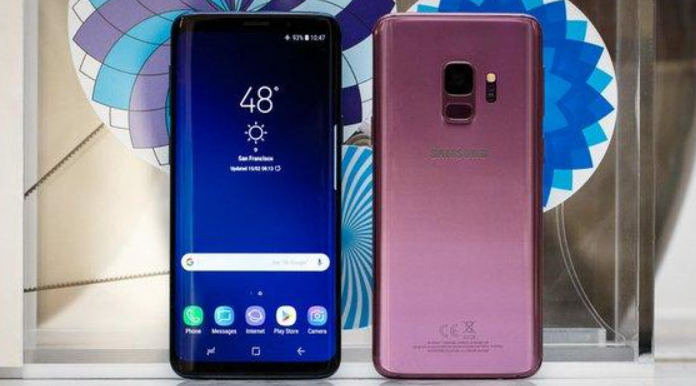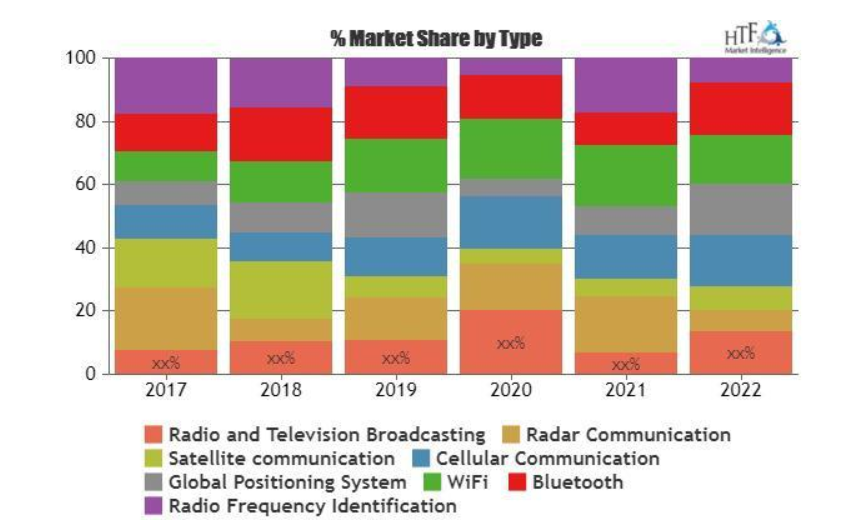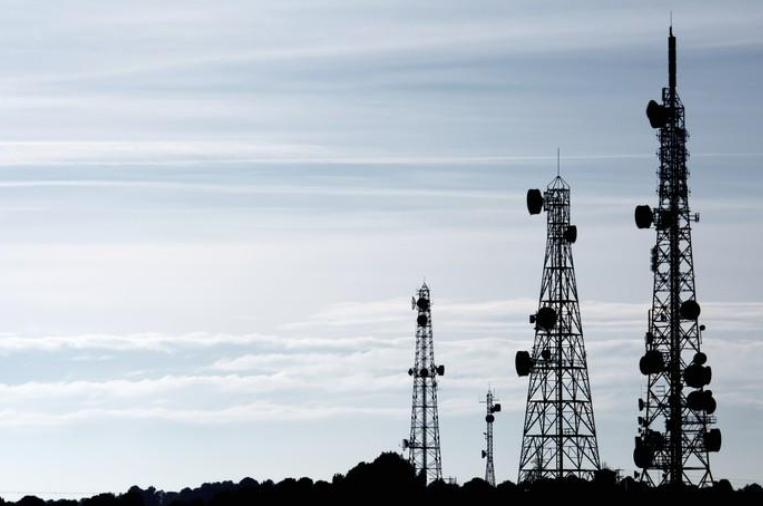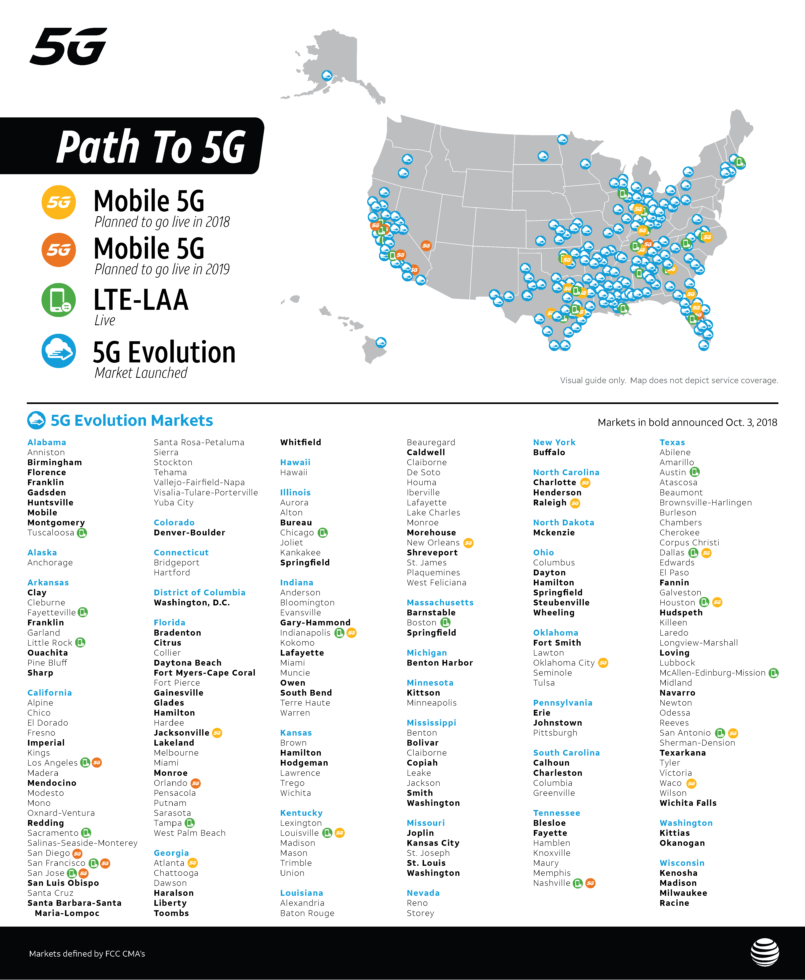Consumer Tech January
Consumer Tech January
Here Comes 5G
BY RICHARD M. SHERWIN
(this was transcribed from Richard’s last lecture)
Most of you in this esteemed audience realize that by the time this lecture ends a few friends or relatives of yours in North America will have a wireless connection to their TVs, Mobile Phones, Tablets and computers that’s five times the speed and clarity than you have now in Palm Isles. This new wireless technology could be better, cheaper, faster and maybe even more secure than the expected delivery and installation of fiber optics, which Palm Isles will have in two years and some of you might have up North now.
In the past decade, telecommunications has turned into a highly competitive industry where companies are competing to buy valuable spectrum. This competition has been triggered by technological advancements, privatization, and liberalization. Mobile communication in particular has made many transitions since 2000. Mobile technology has moved from second generation (2G) to third generation (3G) to fourth generation (4G) and is now in transition to fifth generation (5G) technology.

Meet Clayton and Emily Harris. They are the first people in the world to get 5G Home. Picture Courtesy of Verizon News
The new wireless technology is 5G
5G stands for fifth-generation cellular wireless, and the initial standards for it were discussed as early as 2012 but no standards were set until the end of last year. 5G, using the competiting Verizon and AT@T versions, will contain different speeds and capabilities then perhaps the 5G being tested by Comcast and other providers.
The Federal Communications Commission opened bids for this level of wireless technology last August, but controversy surrounding the bidding is already occurring. Some maintain that this very valuable and next generation technology was given extra access to the “friends” of the present administration in Washington. However, the auction so far has been monitored so closely by many consumer groups on both sides of the aisle, that the spectrum allotment will wound up in the usual service provider hands for its main implementation.
A spectrum auction is a process whereby a government uses an auction system to sell the rights (licenses) to transmit signals over specific bands of the electromagnetic spectrum and to assign the usually scarce spectrum resources. Your 3G mobile phone service that is now about ten years old had an auction that lasted months, until the then “phone” companies shared the space. And, of course , the government took its share of the spectrum either in its auction fees or actually keeping some of the spectrum for the security of the U.S.
Depending on the specific auction, a spectrum auction can last from a single day to several months from the opening bid to the final winning bid. With a well-designed auction, resources are allocated efficiently to the parties that value them the most, the government securing revenue in the process
Examples of 5G technology that have been previewed by the media and in trials in selected areas of North America contain different data transmission speeds and different coverage capabilities. Their final implementation will still be cleared by the FCC.
Many of you in the audience already have 4G mobile phones and a few of those phones will be able to upgrade to 5G. But most mobile phones or tablets will not be compatible with the new standard. Previously 1G to 2G to 3G was easy to accomplish through the microchips inside your phones. But, according to many scientists 4G to 5G is a quantum leap forward and will require different phones, modems routers and even different kinds of transmission poles than you see now only a few miles from Palm Isles.

Samsung and Motorola will roll out 5G-compatible phones next month
The greatest difference from 4G is that 5G can be used NOT just for mobile phones and tablets but for operating your PC and TV and maybe even your appliances.
Some experts claim that Verizon’s Home 5G is just a slightly faster 4G. (PC Magazine did a time trial as did consumer reports). However, Verizon 5G is being tested successfully in Texas and California and New Jersey.
https://twitter.com/i/status/1065598271949664257
AT&T IS FIGHTING BACK
According to Kevin Petersen, senior vice president of device and network experiences, AT&T Mobility and Entertainment, “5G technology is an evolution, not a single event. By the end of the year AT&T plans to be the first to bring both a standards-based mobile 5G network and a mobile 5G device to its customers.” So far this year some form of AT&T’s 5g is in ten cities.
Petersen maintains that AT&T will be over 200 markets by the spring. He says Evolution markets are locations where AT&T deployed technologies that enable peak theoretical wireless speeds for capable devices of at least 400 megabits per second.
Right now, the fastest speed Comcast or other cable providers can really maintain is about 300 mps. Petersen says AT&T plans to offer 5G Evolution in over 400 markets by the end of the 2019 and eventually to over 200 million people.
AT&T is also using LTE-LAA a kind of in between 4G and 5G . With LTE-LAA, network technologies have a peak theoretical wireless speed for capable devices of 1 gigabit per second. LTE-LAA is now live in parts of 20 cities with plans to reach at least 24 cities this year.

Chart represents market share of the different broadcast and Wi-Fi technologies
Arguments for and against 5G
The FCC and FTC are whole heartedly supporting the rollout of 5G and investment backers are putting money behind it. Bain capital, which helped spearhead new technology investments, is banking on 5G to be the next “great thing” in technology.
However, there are plenty of consumer groups asking for a slower development of the technology. Many local and regional municipalities are also monitoring the rollout of 5G.
When it comes to mobile service, the industry credo has long been faster is better: Increase the speed and the user will benefit. When network operators transitioned from 3G to 4G, for example, they knew that it would create a wave length that wouldn’t be so congested and that ever increasing video, data, multimedia hogging smartphone customers would immediately experience dramatic improvements in video download speeds. With such a clear reward in view, network operators had no trouble justifying their investments in 4G. Many, in fact, felt that embracing 4G was a competitive necessity, says a spokesman for Bain Capital.
But, isn’t there always a BUT?, health advocates maintain that the power and unknown effects of the new or renovated 5G towers are more dangerous than other cell towers because of the short length of millimeter waves (MMV) required to support the bandwidth.
So, to make sure 5G is working at its promised strength and reliability, 5G could become pervasive and could be everywhere, these 5G opponents maintain. Small cell stations could be outside of your apartment, attached to your private home or even in your local coffee shop.

Richard’s Experience with Wireless
When I was at Lucent/Philips in the late 1990s and early 2000s, we spent millions on testing present and future technologies. We couldn’t come up with a definitive carcinogenic answer, but the Feds approved our expansion into wireless technology with very close supervision.
My boss Robert Faught, who would go on to Bell South and then to Comcast, would always get photographed with our latest mobile phone in his ear and the 6-foot 8 former basketball star and award winning technology sales person never got sick and is still 6 feet 8

Robert Faught
However, our European sister companies took a more and probably safer approach claiming 4G and 3G may be to blame for health issues in children and adults around the world. So extra care was implemented worldwide on cell towers and the mobile phones we even use today.

Bell Labs, then run by Lucent’s non marketing team with help from Dutch Giant Philips, N.A., ran tests on their own, which even today stand up to scrutiny.
But, according to Safespaceprotection.com, a radiation monitoring organization, the microwaves from cell phone towers can cause memory loss, headaches, cancer, birth defects and heart disease. Some believe the closer you live or work to a cell phone tower, the greater risk to your health.
“Cell phone towers create electromagnetic radiation. That radiation is considered a possible carcinogen by the World Health Organization. And it doesn’t stop there, thousands of well documented studied indicate there is a link to cell phone towers and an increase in serious illnesses. Again, this is based on 3G and 4G signal strength and radiation- not for the more powerful 5G network. Safespace says they can only imagine what 5G will mean for our bodies, minds, and environments.”
But sources at Verizon, Comcast, AT&T say extensive testing has already been done on 5G. “These same opponents maintained that present day cellphone towers, cellphone microchips and Fiber to the Home would cause cancer, too and so far, there’s no proof of that,” says a very reliable source at Oath, a Verizon spin off partner. And supposedly, AT&T, Comcast, Time Warner Spectrum and Altice (Optimum), are all presently working on installing shields on cell phone towers, modems, routers and the chips used in 5G, super safe.

The Verizon 5G testing center

RELATED ARTICLES

- in: Featured
- Post by:

- in: Featured
- Post by:

- in: Consumer Tech, Featured, Technology - How To
- Post by:
Comments are closed.


4 Comments
best web hosting company
Greetings! Very helpful advice within this article!
It is the little changes that produce the greatest changes.
Thanks a lot for sharing!
best web hosting 2020
I am regular visitor, how are you everybody?
This piece of writing posted at this web site is truly good.
adreamoftrains website hosting companies
Hey there are using WordPress for your site platform?
I’m new to the blog world but I’m trying to get started and create my own.
Do you require any coding knowledge to make your
own blog? Any help would be really appreciated!
adreamoftrains web hosting
cheap flights
Thank you, I’ve just been searching for information about this topic for a long time and yours is the greatest I’ve discovered so far.
But, what about the conclusion? Are you sure about the source?